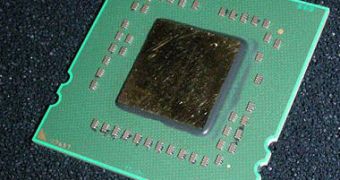During the recent AMD's Analysts Days a number of hints about the future strategy that will be employed to level with Intel emerged, and the plan looks like a good one, but like someone once said "No plan survives contact with the enemy", that's why they are called the enemy. AMD position on the market is not too solid at the moment and just like some software producers that would try to surpass Microsoft in software sales, getting on the same level with a hardware giant like Intel is going to be very hard. Caching up with a leading manufacturer and vendor in a certain field is very hard because their leadership gives them an economical advantage, wider revenues spectrum and higher resources that can be directed towards research and development of new products and technologies. To these already hard problems, a potential competitor for the field's leader place will have to pass the leader's reputation and better brand recognition and probably the most difficult to solve problem: get people to trust you more than they would an already established manufacturer and vendor.
"AMD is trying to create a market move and is trying to assure us that Intel won't make the cut. AMD's strategy is based on three primary concepts: Devalue the Intel brand, eliminate Intel's technical advantage, and be the OEM vendor of choice",according to the news site TGDaily. The marketing and advertising Intel machines are well oiled indeed as their brand appears not only on their own products( processors, chipsets, etc) but on the computers that integrate those products as well. So Intel is one of the most well known and respected brands in the whole world. AMD is planning its attack on Intel's brand in a very aggressive manner by accusing the bigger company of illegal and unlawful business practices worldwide. This was successful in Japan and now is works pretty well with the European Union, which has officially accused Intel of monopoly. Due to Microsoft's own problems with the monopoly charges in the E.U. space, people might be less than thrilled hearing that another big name company stepped wrong. Again.
Number two on AMD's "How to overthrow Intel" list is eliminating their technological advantages. No amount of advertising and marketing propaganda is going to help AMD win the first position if their processors lack the ability to perform up to the users' expectations. According to AMD's processor and video chip roadmap, some big surprises are lurking just around the corner. On the graphics cards market Intel has a very weak spot, as its video chips are solely aimed at the entry and middle level markets, so AMD's acquisition of ATI places the smaller company well in front of the otherwise undisputed leader. AMD's incoming processors may hold the power to take the performance crown from Intel, but this must be combines with the ability to ship them in numbers and price them low enough in order to become affordable and desirable even to users that normally would not upgrade their computing platform right away.
Even if AMD succeeds in becoming the users' favorite processor supplier, DIY (do it yourself) customers are compared to the vast majority of computer users that prefer to buy an already assembled and tested system from a brand name vendor like Dell and Co. So, getting on the right foot with OEMs is another item on AMD's list. "OEM's, the companies that brand server and PC hardware, prefer vendor relationships where the vendor knows they are a vendor and is clearly subservient to the OEM. They are frustrated with both Intel and Microsoft, because these two companies often don't seem to understand they are vendors and that the OEMs don't work for them," according to the site TGDaily. When compared with Intel and Microsoft at this point, AMD emerges as a company centered on its customers needs, as it made "a habit of asking what the OEMs want". This approach focuses more on customers satisfaction and while it may not get a company to the very top of the pyramid, it creates loyalty among vendors and end users alike. "Currently, Intel does provide Apple treatment similar to this, but the practice doesn't seem to have spread yet to the other OEMs. Finally, the OEMs have learned that Intel will be more responsive, if they have AMD in the mix."
In the coming months it will become clear if AMD's strategy is going to pay off, as the company has a lot of plans for both the desktop and the mobile computing platforms, as well for the graphics cards market, where unfortunately they are still very much behind Nvidia. On the other hand, a strong position on the low and middle end graphics cards market doesn't sound so bad after all.

 14 DAY TRIAL //
14 DAY TRIAL //